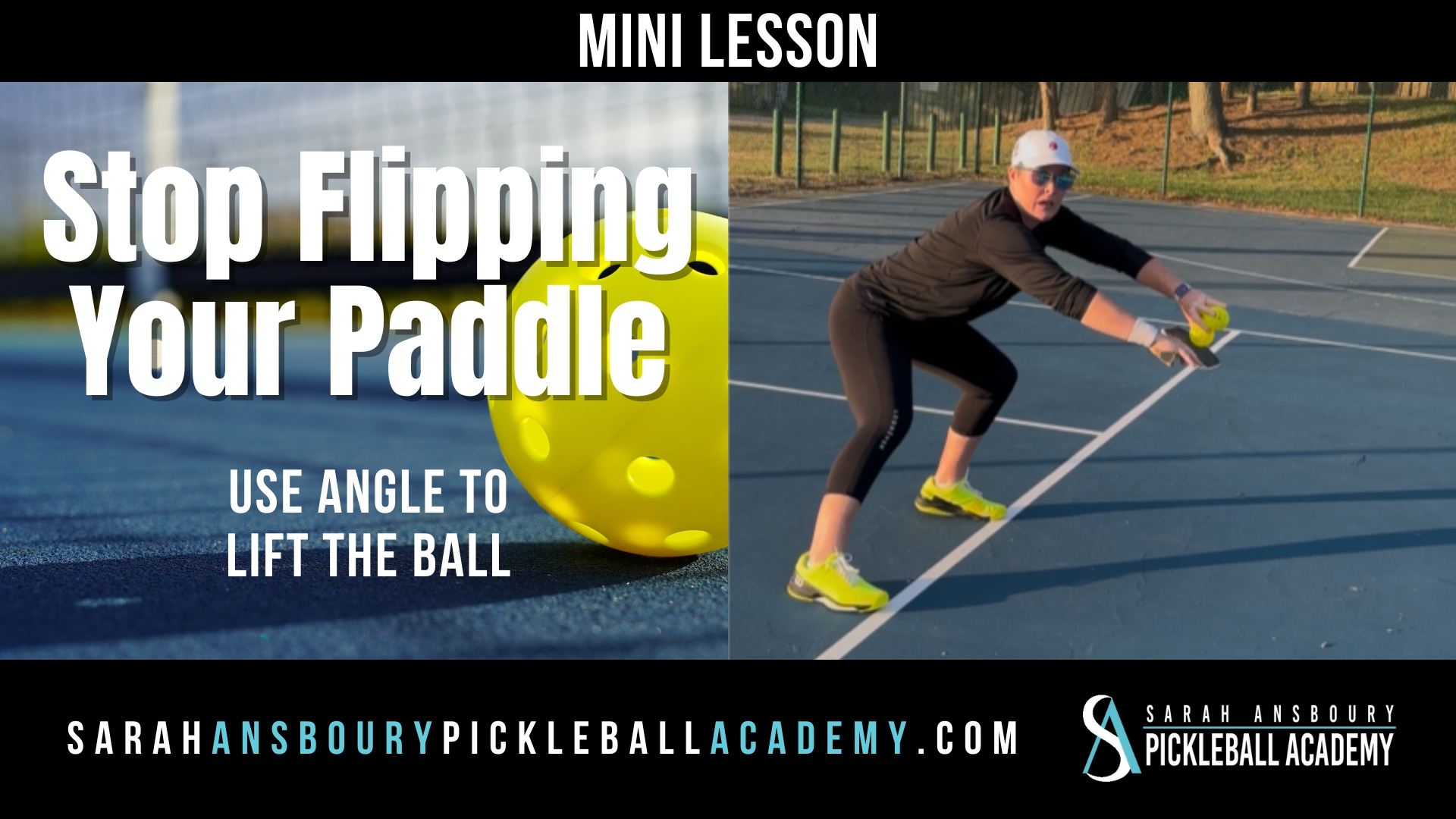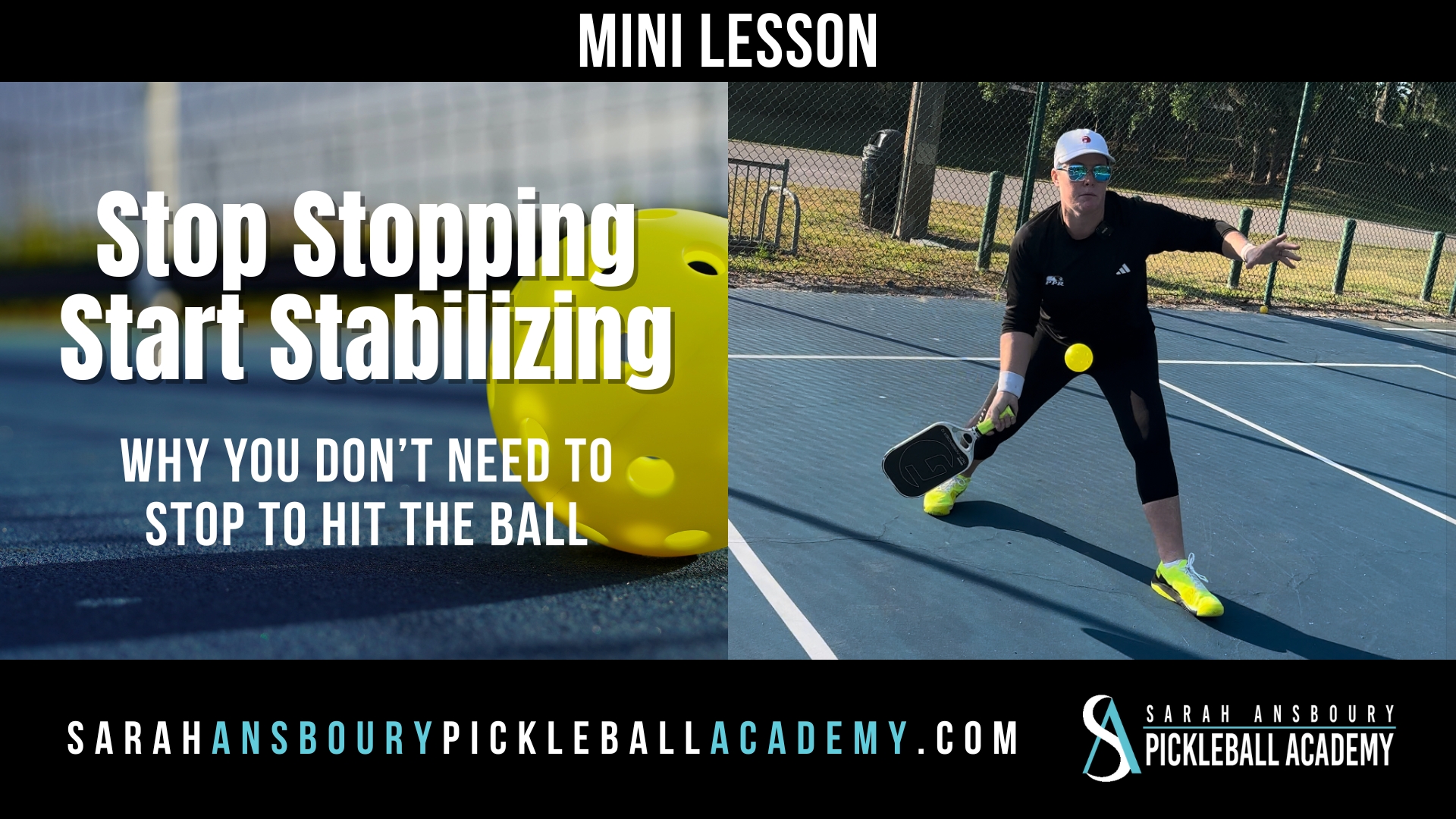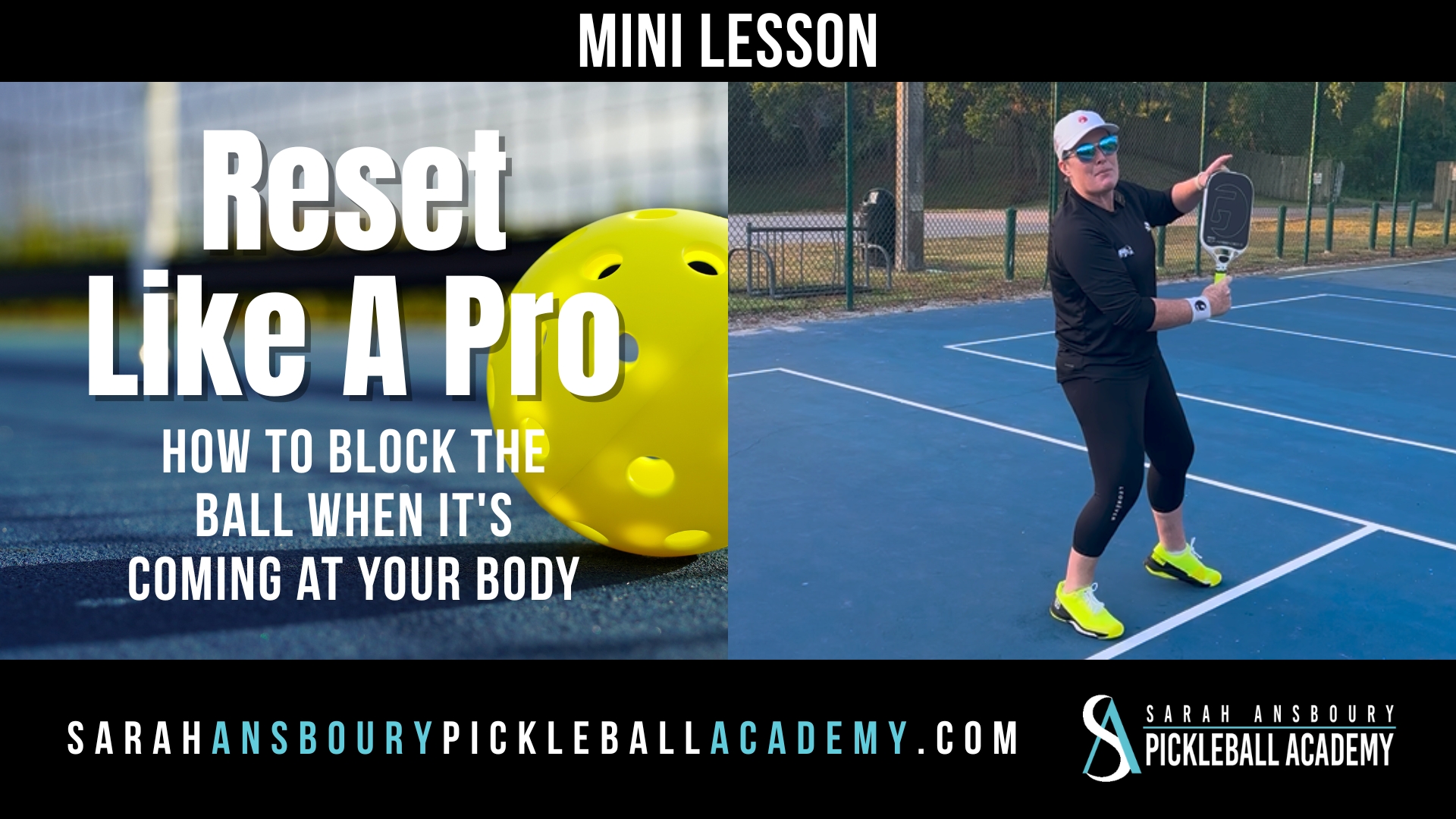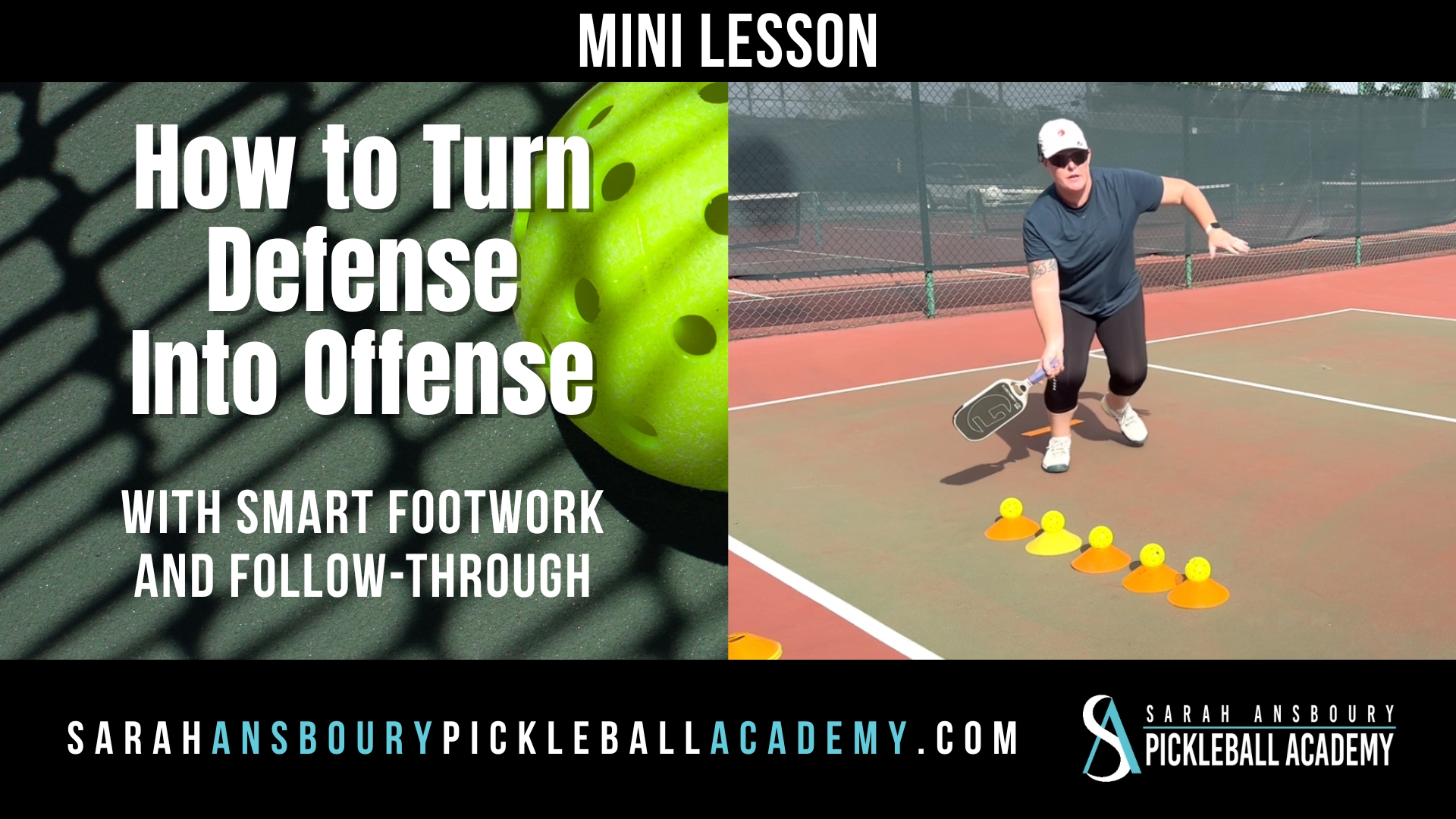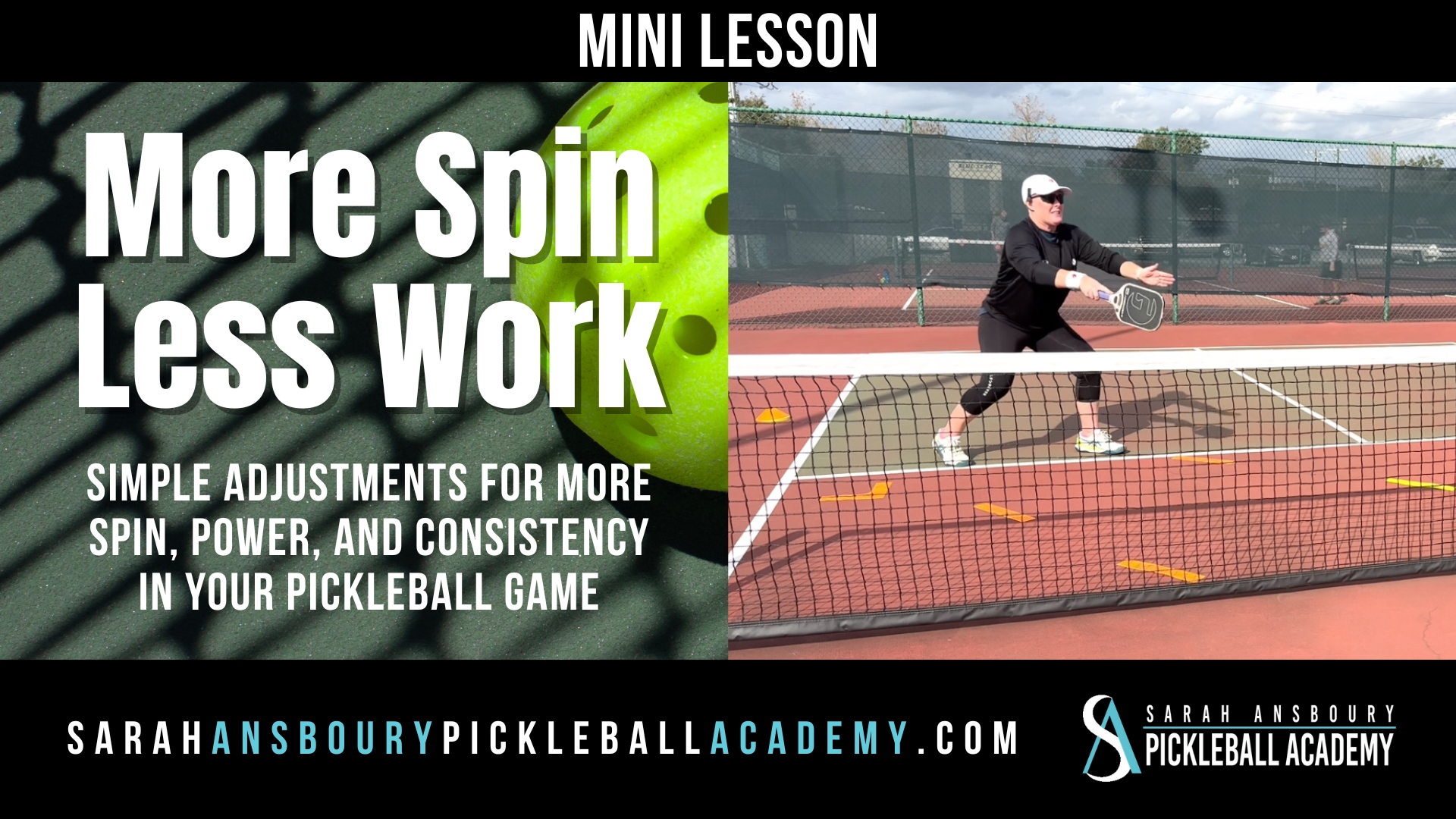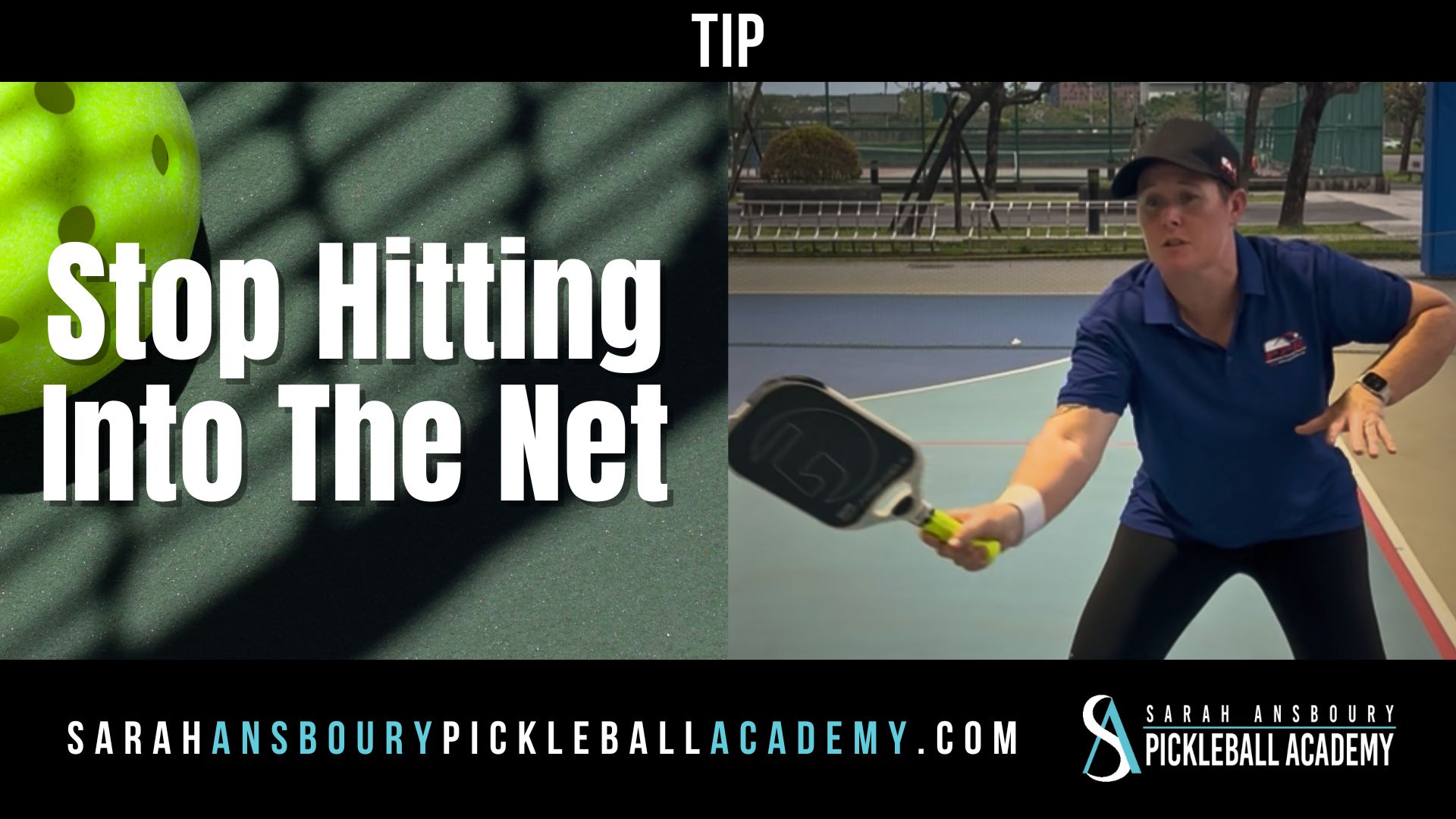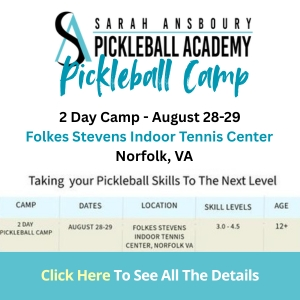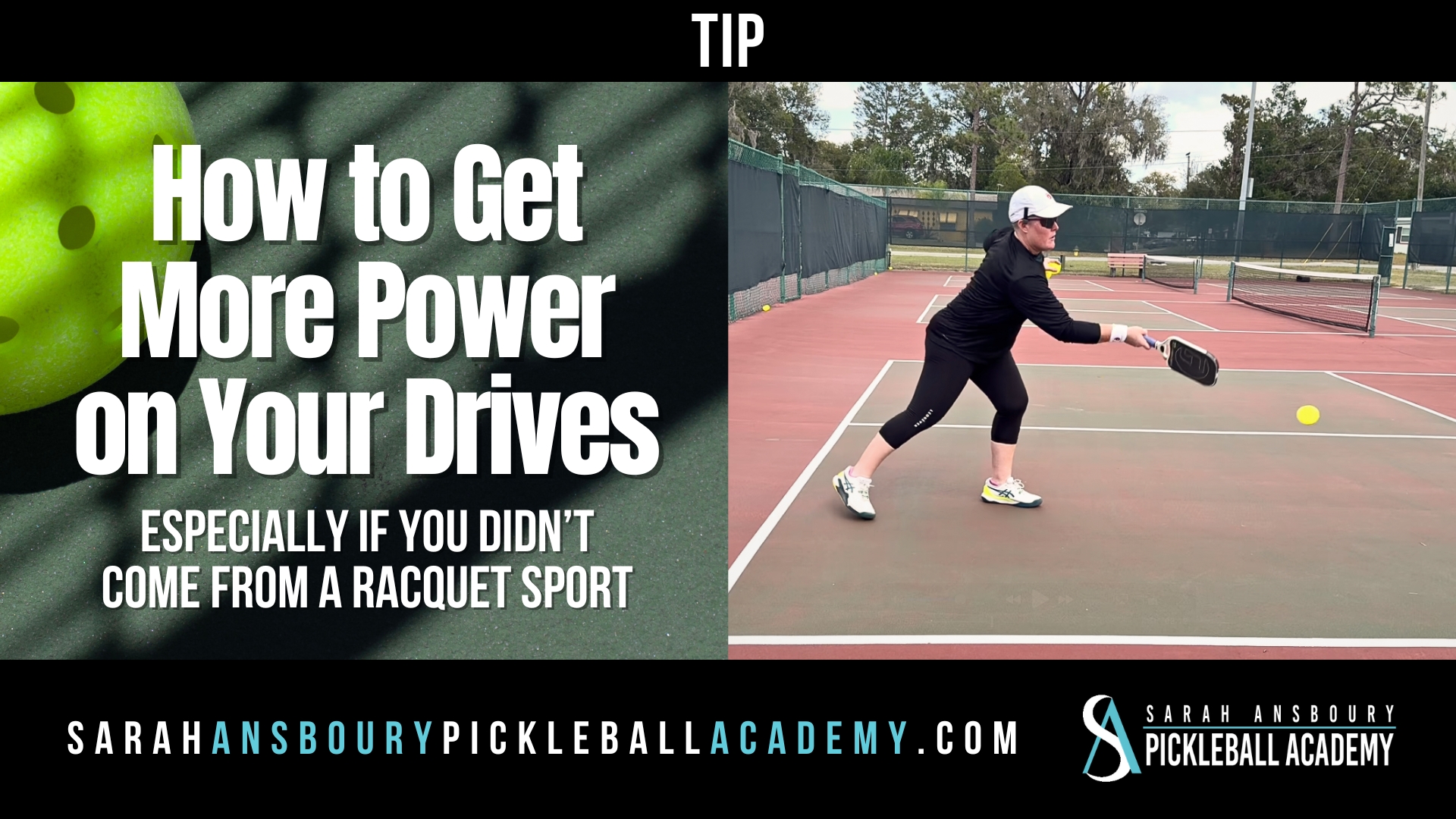Last week we talked about adding variety to your pickleball serve. This week we focus on the return of serve… A shot I hate to miss!
Return of Serve: A Shot You Hate to Miss
I hate to miss a return of serve, and so should you. Think about it:
- You know the ball is coming to you;
- In 99% of the cases, the ball is only a step or two away; and
- You have a pretty big area to hit it into (since both players are at the baseline).
So when we don’t return the serve effectively it is more likely that we weren’t focused or tried to do too much with the ball. Both of these things are mental mistakes, not physical…not swing mechanics.
Focused Return of Serve Practice
If you have a practice partner, he or she can practice adding variety to their pickleball serves as you practice your return of serve. Specifically, I would suggest that your practice partner hit a variety of different serves while you practice hitting each ball to the same spot. Let me suggest that you first focus on hitting deep to the center of the court.
- Hitting Deep to the Center is always great because it may cause confusion between the
 partners.
partners. - Confusion leads to balls that are less well-struck and slows down the team from moving to the non-volley zone line.
Once you have developed confidence in your ability to hit deep to the center of the court, aim closer to the lines. Remember, there will be times when you and your partner want to focus on returning the ball to one opponent. So it is important to be able to direct the ball to either player at will.
Practicing Your Return of Serve
When you practice, I want you to concentrate on a few key areas:
- Pick a Target: Make the target small and specific. Before your opponent hits the ball, stare at that spot and commit to that spot.
- Watch the Ball: Focus on the ball from the moment it is struck until you make contact. Concentrate on watching the ball. Some people try to focus on the holes in the ball. Again when we focus it is easier and more effective to focus on specific things, not wide areas. Once you have learned to watch the ball, you’ll be surprised at the difference.
- Get in Position: Your body should be perpendicular to the net, or baseline, and you want to step into the ball. Pick up your feet. The correct sequence is back foot, front foot, contact the ball. Take note as you practice….are you executing the correct sequence?
- Get to the Line: I want to encourage you to practice the way you want to play. Practice hurrying to the line and getting set before the ball is returned. You can’t expect yourself to do it in a game if you don’t practice it.
Take time to practice your return of serves. Remember, we train so that when the pressure is on we have confidence.


